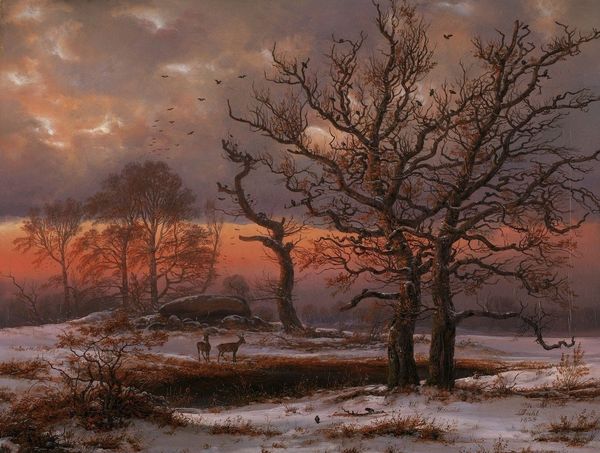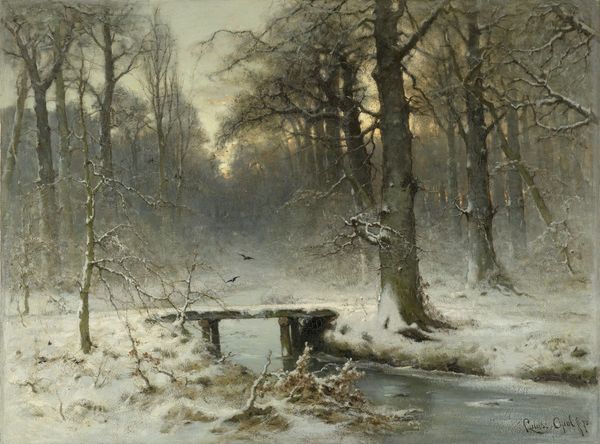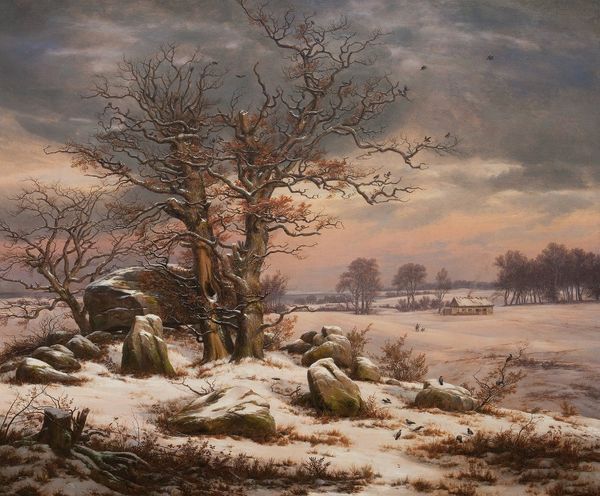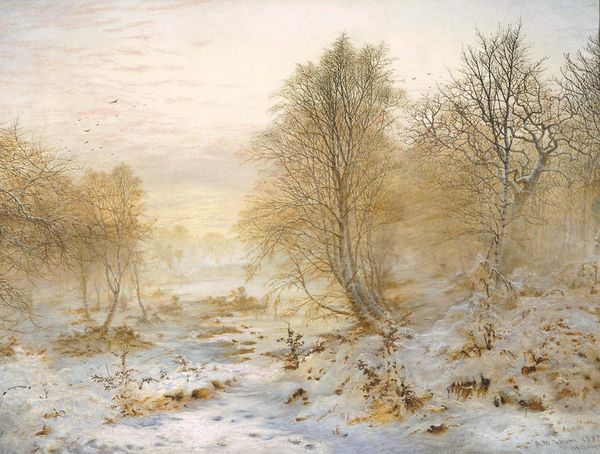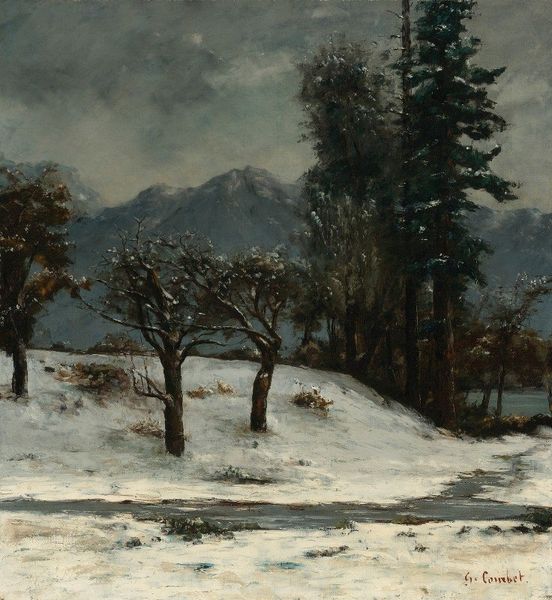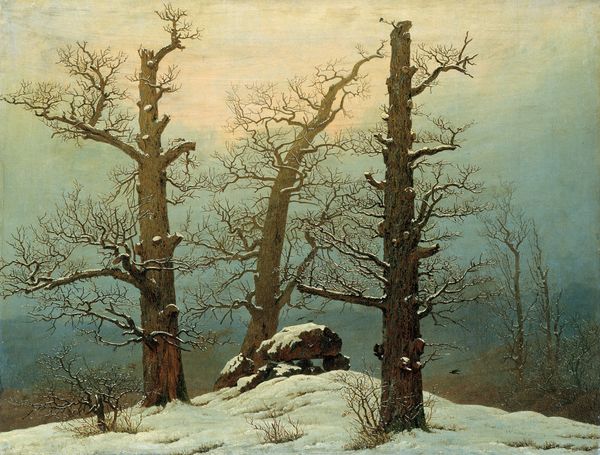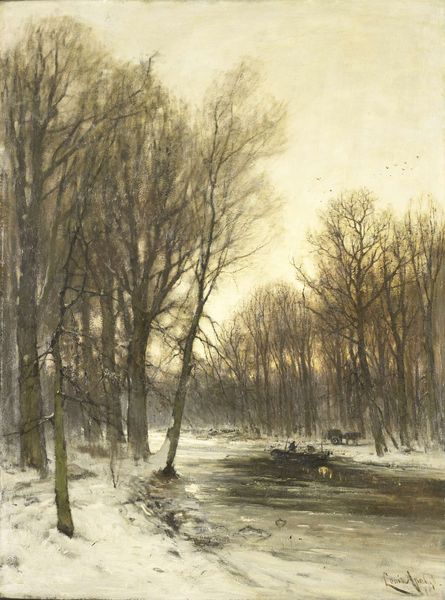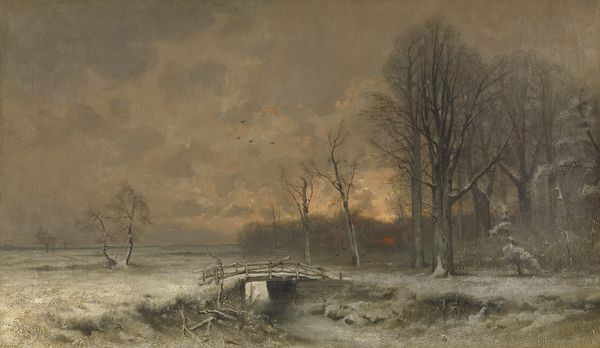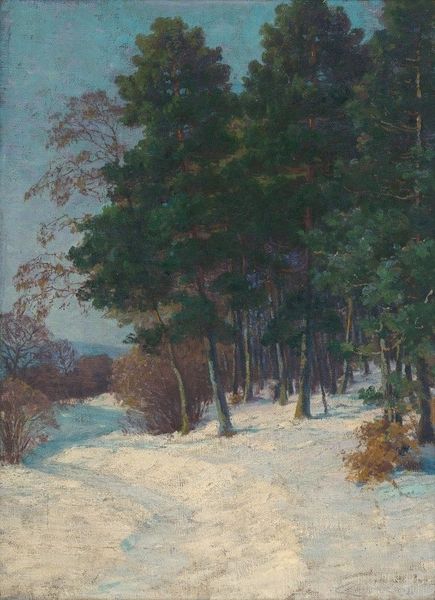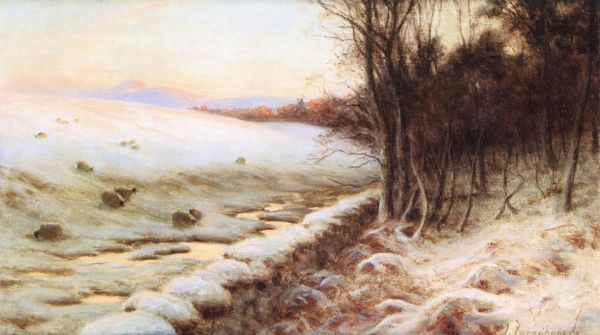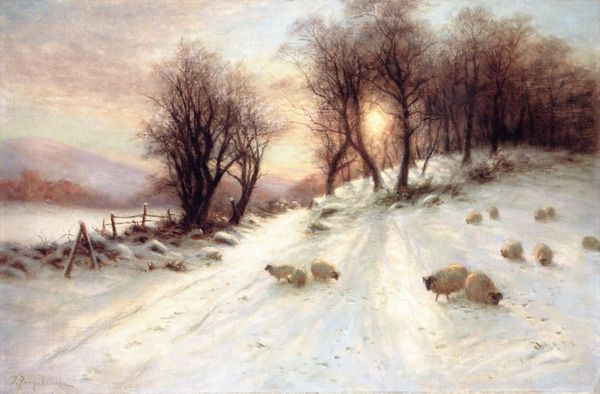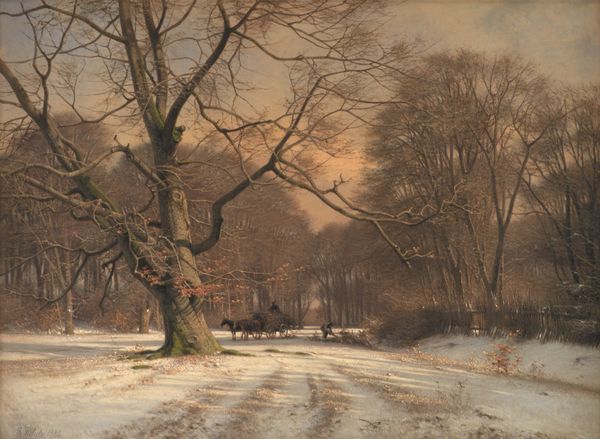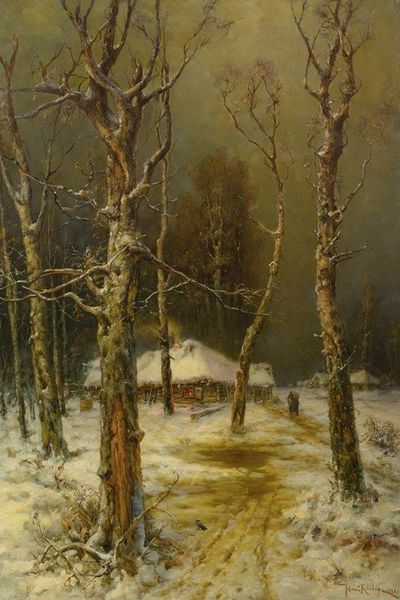
#
vast and haze
#
impressionistic
#
snowscape
#
countryside
#
landscape
#
impressionist landscape
#
seascape
#
fog
#
coastline landscape
#
watercolor
#
mist
Copyright: Public Domain: Artvee
Editor: So, we're looking at Johan Christian Dahl's "Oak Tree by the Elbe in Winter" from 1853. It's oil on canvas and immediately strikes me as rather melancholic, you know? The muted colors and the solitary tree... What's your take on it? How do you interpret this work through its time? Curator: This piece speaks volumes about the changing perceptions of landscape and national identity in 19th-century Europe. Dahl, a Norwegian artist, painted this while working in Dresden. Consider how the image evokes a sense of Romantic nationalism through its depiction of the German landscape, the Elbe River being a crucial symbol of German identity. The oak tree itself? A historic symbol in German culture. Editor: That’s interesting. So the tree isn’t just a tree…it carries symbolic weight? Was Dahl embracing or commenting on that sense of nationalism? Curator: It's complicated. Artists were becoming increasingly involved in national movements, consciously shaping a visual vocabulary of identity. Dahl's landscape, therefore, needs to be understood in this context. The image reflects a visual manifestation of rising nationalist sentiments and also potentially speaks to feelings of displacement and longing through a solitary and somewhat barren landscape. Look closely at how the atmospheric perspective and use of light emphasize the scene's inherent somberness, resonating with period views on national character and environment. What political ideas about "German-ness" was the public consuming, and how was Dahl shaping that view? Editor: Wow, I never would have considered that depth! It's more than just a pretty landscape painting then, isn't it? More like a historical document disguised as art. Curator: Precisely! Dahl wasn't merely recording nature; he was engaging in a broader cultural and political discourse about place, belonging, and national spirit. I guess seeing landscapes transformed this way offers deeper perspectives on a cultural time capsule. Editor: I will never look at landscapes the same way! Thanks!
Comments
No comments
Be the first to comment and join the conversation on the ultimate creative platform.
